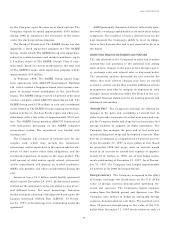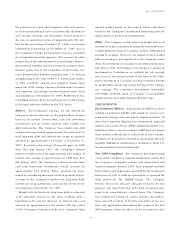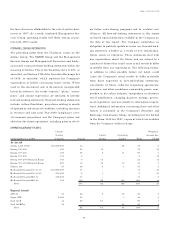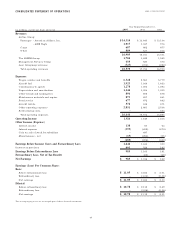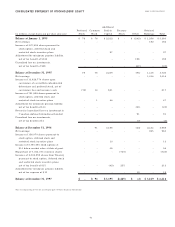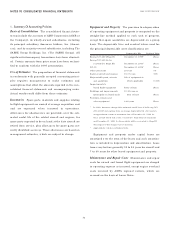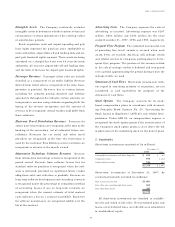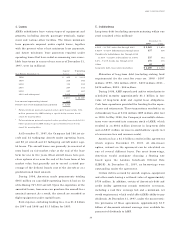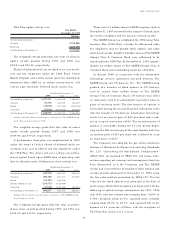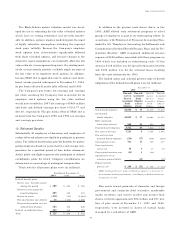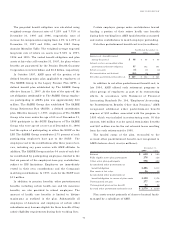American Airlines 1997 Annual Report Download - page 54
Download and view the complete annual report
Please find page 54 of the 1997 American Airlines annual report below. You can navigate through the pages in the report by either clicking on the pages listed below, or by using the keyword search tool below to find specific information within the annual report.
AMR CORPORATION
NOTES TO CONSOLIDATED FINANCI AL STATEM ENTS
52
1. Summary Of Accounting Policies
Basis of Consolidation The consolidated financial state-
ments include the accounts of AMR Corporation (AMR or
the Company), its wholly-owned subsidiaries, including
its principal subsidiary American Airlines, Inc. (Ameri-
can), and its majority-owned subsidiaries, including The
SABRE Group Holdings, Inc. (The SABRE Group). All
significant intercompany transactions have been eliminat-
ed. Certain amounts from prior years have been reclassi-
fied to conform with the 1997 presentation.
Use of Estimates The preparation of financial statements
in conformity with generally accepted accounting princi-
ples requires management to make estimates and
assumptions that affect the amounts reported in the con-
solidated financial statements and accompanying notes.
Actual results could differ from those estimates.
Inventories Spare parts, materials and supplies relating
to flight equipment are carried at average acquisition cost
and are expensed when incurred in operations.
Allowances for obsolescence are provided, over the esti-
mated useful life of the related aircraft and engines, for
spare parts expected to be on hand at the date aircraft are
retired from service, plus allowances for spare parts cur-
rently identified as excess. These allowances are based on
management estimates, which are subject to change.
Equipment and Property The provision for depreciation
of operating equipment and property is computed on the
straight-line method applied to each unit of property,
except that spare assemblies are depreciated on a group
basis. The depreciable lives and residual values used for
the principal depreciable asset classifications are:
Depreciable Life Residual Value
Boeing 727-200 (Stage II) December 31, 19991None
Boeing 727-200 (to be
converted to Stage III) December 31, 20031None
DC-10 December 31, 20022None
Other jet aircraft 20 years 5%
Regional aircraft and engines 15-17 years 10%
Major rotable parts, avionics Life of equipment to
and assemblies which applicable 0-10%
Improvements to
leased flight equipment Term of lease None
Buildings and improvements 10-30 years or
(principally on leased land) term of lease None
Furniture, fixtures and
other equipment 3-20 years None
1In 1996, American changed the estimated useful lives of its Boeing 727-
200 aircraft and engines from an average depreciable life of 21 years to
an approximate common retirement date of December 31, 1999 for
those aircraft which will not be converted to Stage III noise standards
and December 31, 2003 for those which will be converted to Stage III.
The impact of this change was not material.
2Approximate common retirement date.
Equipment and property under capital leases are
amortized over the term of the leases and such amortiza-
tion is included in depreciation and amortization. Lease
terms vary but are generally 10 to 25 years for aircraft and
7 to 40 years for other leased equipment and property.
Maintenance and Repair Costs Maintenance and repair
costs for owned and leased flight equipment are charged
to operating expense as incurred, except engine overhaul
costs incurred by AMR’s regional carriers, which are
accrued on the basis of hours flown.


